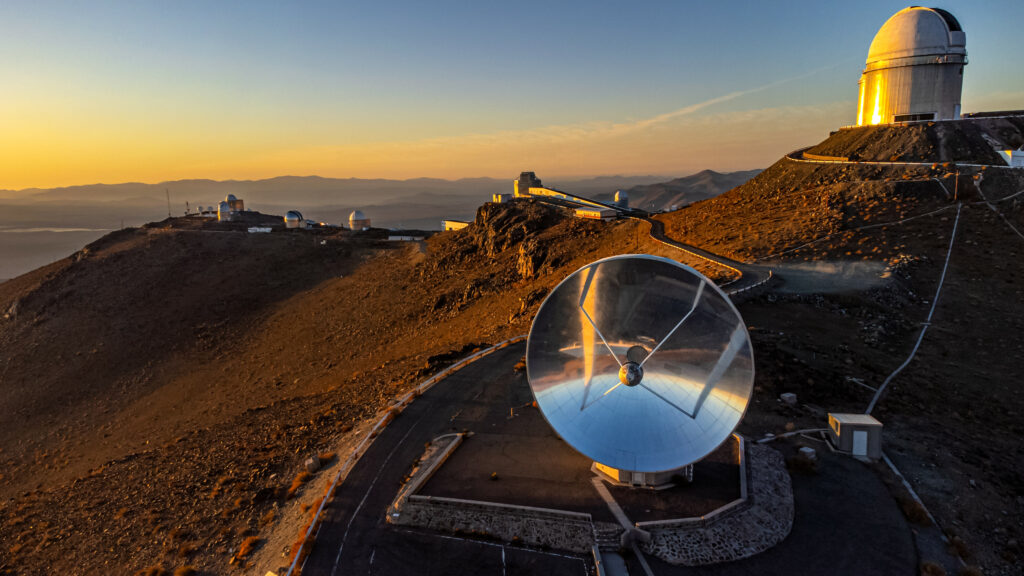The presented image was obtained during sunset at the top of Mount La Silla. It is located in the Chilean Atacama Desert and is home to a large number of different telescopes.

To date, the main astronomical instrument of La Silla is the 3.6-meter ESO reflector. It is mainly used to search for exoplanets. The telescope is located on the very top of the mountain (the right part of the image).
But not all of the La Silla telescopes continue to make observations. As an example, the Submillimeter Telescope of Sweden-ESO (SEST), which 15-meter dish sparkles in the foreground. SEST was established in 1987. At that time, it was the largest telescope of its type in the southern hemisphere. Its wave range made it possible to explore very distant objects of the Universe, thanks to which many remarkable discoveries related to the regions of star formation were made at SEST.
But over time, new technologies have emerged, on the basis of which more advanced instruments for observations in the millimeter and submillimeter spectral regions have been created. These include the APEX Telescope (Atacama Pathfinder Experiment) and the Atacama Large Millimeter/Submillimeter Array (ALMA). In 2003, around the same time that APEX and ALMA began regular scientific observations, all work on SEST was discontinued.
But, although SEST has been decommissioned, its antenna still stands on La Silla. It reflects, as if in a mirror, not only the sky and the surrounding desert landscape, but also, figuratively speaking, the past of astronomical research.
Earlier we published photos of “red sprites” over the Atacama Desert.
According to https://www.eso.org
Follow us on Twitter to get the most interesting space news in time
https://twitter.com/ust_magazine
